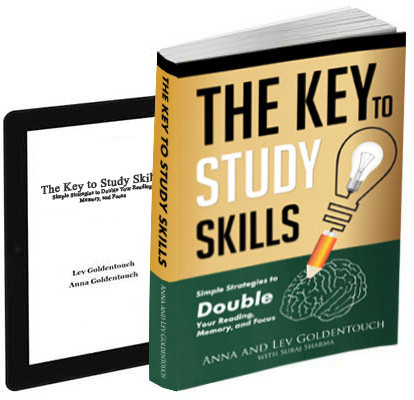The Power of Divergent Thinking: Creativity, ADHD, and the Genius of Distraction
Focus and discipline are celebrated as the cornerstones of productivity. But what if your greatest breakthroughs don’t come from laser focus, but from distraction, curiosity, and chaos? For many, divergent thinking—exploring many ideas instead of narrowing in on one—is not just a quirk, but a superpower.
In this article, we’ll explore why having an “unfocused mind” may actually make you more creative, and how ADHD, dyslexia, and non-linear thinking styles can unlock higher levels of innovation. You’ll also learn how to turn these tendencies into tools for lifelong growth, productivity, and meaning.
What Is Divergent Thinking?
Divergent thinking is the ability to generate many different ideas, solutions, or associations from a single input. It’s often contrasted with convergent thinking, which seeks one correct answer.
While convergent thinking is efficient for tasks like solving a math equation, divergent thinking is key for:
- Problem-solving under uncertainty
- Brainstorming creative ideas
- Connecting unrelated concepts
- Storytelling, art, and innovation
People who think divergently often ask, “What else could this mean?” or “How else could this be done?”—instead of just solving the problem as it was presented.
The Gift of an Unfocused Mind
Modern psychology is starting to confirm what many creative minds have always known: not all distractions are bad. In fact, they may be a sign of a brain that is wired for broader awareness and more fluid idea generation.
A recent finding in cognitive neuroscience shows that people with traits like ADHD receive sensory updates nearly 20 times per second—far more than neurotypical individuals. This constant flow of unfiltered information might seem chaotic, but it opens up new cognitive pathways.
As explored in this article on ADHD and hyper-focus, people with ADHD often oscillate between intense focus (hyperfocus) and scattered attention. During scattered states, they’re more likely to combine distant ideas or notice unexpected patterns.
These spontaneous associations are often what drive true creative breakthroughs.
Why Divergent Thinkers Often Struggle With Traditional Systems
School and workplace environments tend to reward focused execution, not ideation. This often leaves divergent thinkers feeling out of place, especially those with ADHD, dyslexia, or sensory processing differences.
But in the realm of innovation, design, and visionary thinking, these traits become assets. Individuals who think differently can:
- Spot gaps in traditional thinking
- Approach problems from unique angles
- Pivot faster when conditions change.
- Merge ideas across disciplines
In fact, many leaders in art, science, and tech exhibit traits of neurodivergence. Steve Jobs, Richard Branson, and Temple Grandin are just a few examples of people whose success stemmed from thinking differently.
For an in-depth view on how superlearning systems can support those with ADHD, ADD, or dyslexia, explore this resource: Can Superlearning Cure ADHD and Dyslexia?
In-the-Box vs. Out-of-the-Box: A Creative Comparison
When discussing creativity, it’s helpful to think in terms of two broad archetypes:
- In-the-box creativity: Working within structured systems, making processes more efficient, iterating within constraints.
- Out-of-the-box creativity: Challenging assumptions, imagining alternatives, inventing new models or paradigms.
Neither is better nor worse—they complement each other.
For example, I excel at structured creativity—designing within frameworks and optimising ideas. My partner Anna is far more free-form, generating ideas without boundaries. Together, we often reach better solutions than either of us would alone.
Understanding your preferred style allows you to surround yourself with complementary thinkers and structure projects accordingly.
The Intersection of Focus and Creativity
There’s a common myth that creativity requires chaos. In reality, the most successful creators learn how to balance freedom with focus.
Meditation, for instance, doesn’t shut down creativity—it opens new mental space by quieting reactive thought. It helps divergent thinkers direct their ideas intentionally, instead of getting swept away by them.
Similarly, people who cultivate meta-awareness—the ability to observe their thoughts—can use their distraction as input for exploration, not avoidance.
This is particularly important for those dealing with attention challenges. As this article on ADHD and focus points out, understanding your cognitive tendencies is step one; structuring your environment to support those tendencies is step two.
Building Creative Momentum Without Burnout
The downside of having too many ideas is overwhelm. When your brain keeps firing on all cylinders, it can be hard to finish projects, follow through on commitments, or even remember where you started.
Here are ways to work with—not against—your divergent mind:
1. Use Time-Boxing
Give yourself short, defined blocks of time to explore ideas, then close the loop by summarizing what you learned. This prevents endless rabbit holes.
2. Keep a Creativity Bank
Log every idea in a digital note or spreadsheet. You’ll reduce mental clutter and be able to revisit your genius later, especially during low-energy days.
3. Alternate Exploration and Execution
Devote different parts of your day (or week) to dreaming and doing. This separation keeps ideation from hijacking follow-through.
4. Use Nootropics With Caution
Some people with ADHD use nootropics or natural supplements to improve focus. While some users report benefits, effects vary widely.
For a practical overview, see this guide to nootropics for ADHD. If you’re considering any cognitive enhancer, consult a health professional first.
5. Embrace Your Wiring
There’s no need to force a linear mindset if it doesn’t suit you. You’re not broken—you’re tuned for novelty, vision, and bold thinking. Own it.
Productivity Systems That Work for Divergent Minds
Instead of fighting distraction, divergent thinkers thrive when they use adaptive productivity systems. Here are a few to explore:
- Mind Mapping: Visualize your thoughts to spot patterns and priorities.
- Bullet Journaling: A flexible analogue system for rapid logging and reflection.
- Agile Boards: Trello or Notion boards let you move tasks fluidly across progress stages.
- Pomodoro + Creative Play: Alternate 25-minute focus blocks with open-ended time for exploration.
If you’re looking for an all-in-one system that teaches you how to channel creativity without burnout, check out the KeyToVision Productivity Masterclass. It’s built specifically for learners and thinkers who don’t fit into “linear” productivity moulds.
Creativity, Meaning, and Mental Wellbeing
Creative thinking doesn’t just lead to innovation—it can increase joy, resilience, and even emotional integration. When we allow ourselves to explore multiple perspectives, we’re better able to:
- Resolve inner conflicts
- Navigate uncertainty
- Express complex feelings
- Build bridges across disciplines or cultures.
Divergent thinking helps reconcile dualities, such as wanting structure and freedom, or logic and imagination. Instead of being forced to choose one identity, you can be both.
Meditation and mindfulness can deepen this reconciliation process, as explored through emotional self-regulation frameworks in the KeyToStudy system.
Listen to Others, Leverage Their Ideas
Even if you consider yourself a focused or structured thinker, you can tap into divergent insight by listening to others. Great ideas often come from unexpected conversations, unconventional feedback, or simply asking different questions.
Surround yourself with people who think differently from you. Let them stretch your thinking.
As one KeyToStudy student wisely said: “I may not have the wildest ideas, but I make them work.” That’s the power of collaboration between divergent and convergent minds.
Expand Your Creative Potential
You don’t need to use psychedelics or go on a spiritual retreat to be more creative (though those may work for some). You just need to pay attention to how your brain already works—and start using it on purpose.
Divergent thinking is not a weakness. It’s not something to “fix” or tame. It’s a tool. A powerful one. And when used wisely, it can change your life, your work, and even the world.
If you’re ready to explore more creative strategies, learning systems, and productivity hacks for the neurodivergent or divergent mind, connect with the KeyToStudy community on Facebook.
And for a deeper dive into building superlearning skills, visualization methods, and mental focus, check out the KeyToStudy book on Amazon. It’s packed with insights that match the exact type of thinking this article celebrates.
You’re not unfocused. You’re multi-focused. Your job is not to filter less—it’s to channel better. Welcome to the power of divergent thinking.

Get 4 Free Sample Chapters of the Key To Study Book
Get access to advanced training, and a selection of free apps to train your reading speed and visual memory

